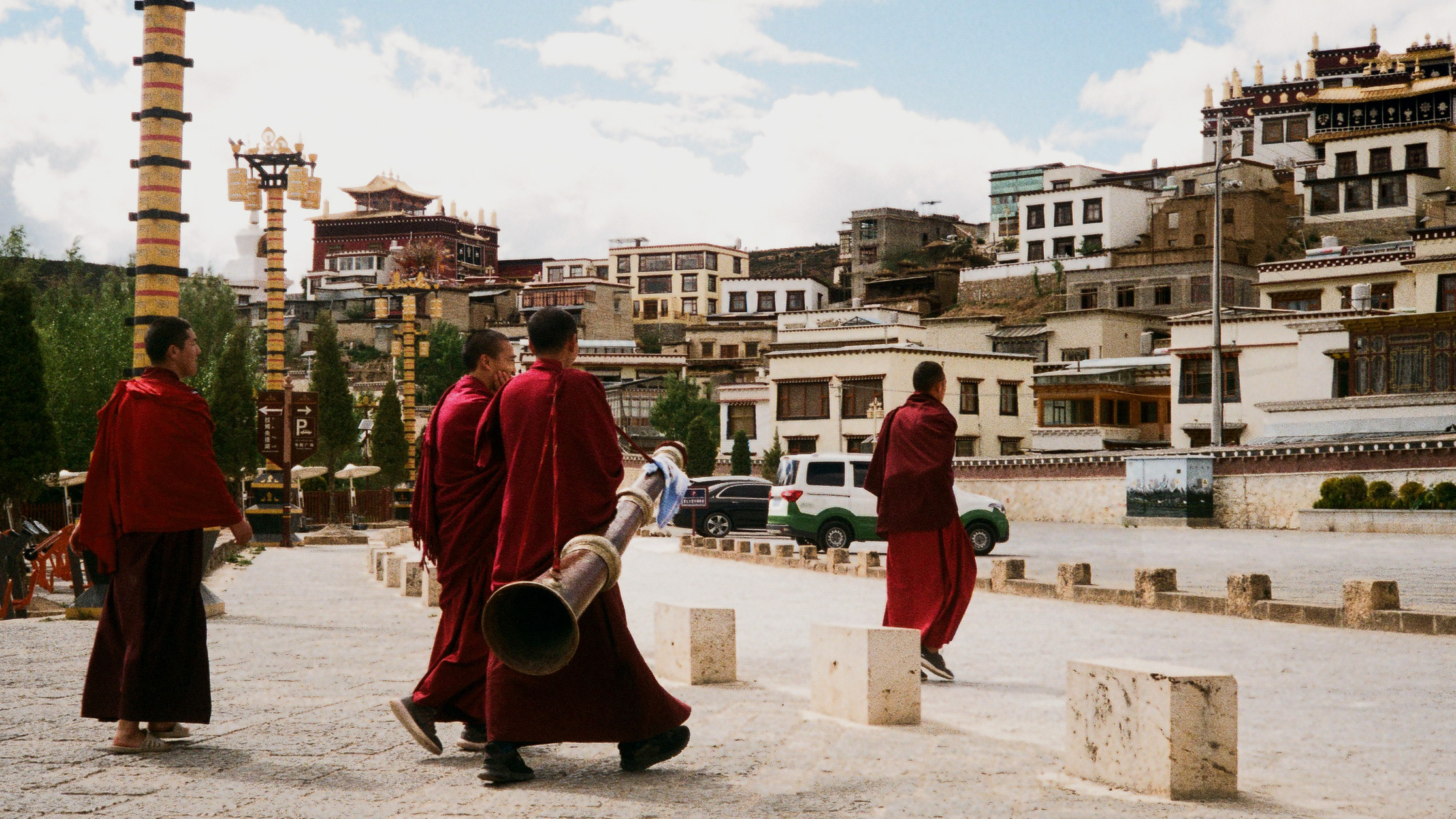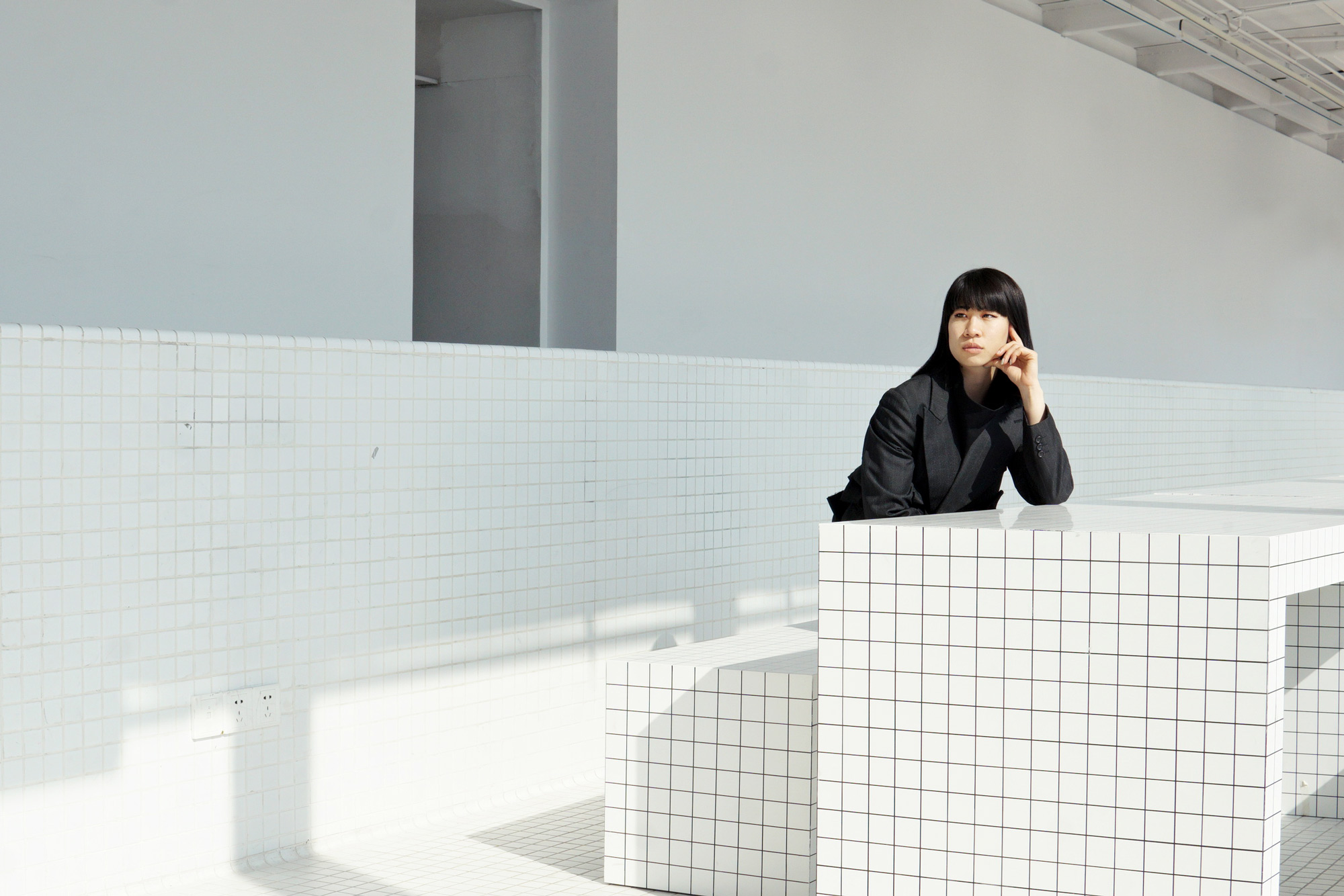It is hard to believe that Shangri-La exists as an actual place. Unlike Yunnan’s other cities, it is not exactly the most well-known tourist destination. The airport security personnels checking my boarding pass had to confirm with the airline staff where I was heading to.
Shangri-la was not always called by that name. Located at the northwest of Yunnan province, the Tibetans called it Gyalthang, the Chinese Zhongdian. It was only in the two decades that the city was bestowed that name to build its tourism industry – in addition to traditional pastoral animal husbandry – and move away from the logging industry that was harming the local ecosystem. Shangri-La’s majority Tibetan population has largely shaped the local architecture of the cities, many of which are characterised by flat thatched roofs and ornate windows sills.

Before coming here, I did not want to get overly excited. Zero expectation equals zero disappointment. Having travelled quite a fair bit within this country, I have observed that some efforts for cultural restoration outside of major provinces such as Beijing, Shanghai, Zhejiang and Jiangsu have, on numerous times, feel crass and lacking in expertise. For every successful preservation such as the Forbidden Palace in Beijing and Humble Administrator’s Garden in Suzhou, there are several not so tasteful ones. Some of the restoration projects I have come across felt more like an attempt to sell culture as commodities rather than preserving authenticity. One such attempt was the restored old towns in Lijiang, another city in Yunnan I visited over a year ago. You might think I am being an overly critical snob, but multiple case studies done by local and international academics have voiced similar concerns about the economic developments and tourism-related activities of these ancient towns.
Now one can hardly pin these misfired attempts on malice, but rather on a combination of miscalculations and conflicting interests from multiple administrative systems from different departments that make long-term strategies difficult to implement. Most importantly, profit maximisation is often prioritised in the development of tourism industry. Money-making endeavours and business activities often do not sit well with the lofty ideals of cultural preservation. Poorer provinces have to find ways to feed their population; short term economic goals are more important than long-term ideologies. Art and culture mean little when the population is in need of basic necessities like food, education and healthcare.
Management is based on outcomes rather than processes in order to reduce the bottlenecks of bureaucracy from central and provincial government. In light of this, some local governments – in a bid to develop the economy and fund social services – has resorted to free market capitalism, creating a mismatch of businesses that were not congruent with the cultural importance of the towns. And one could speculate that there might be under-the-table dealings taking place, especially being so far away from the capital. This is why one of Lijiang’s ancient towns is now booming with nightclubs and loud restaurants. While it could be said that both locals and tourists could enjoy some nighttime entertainments, it hardly was the right method in preserving the historically unique flavour of Lijiang’s Naxi communities. UNESCO was so concerned with the development of the towns that they had to appeal to Beijing to intervene. Such is the complexity of Chinese bureaucracy.
Shangri-La’s own ancient town – Dukezong – bears some resemblance to that of Lijiang in terms of its commercial activities, albeit with less bars and restaurants, and thankfully no nightclubs. Still, I decided to spend the little time I have at Ganden Sumtseling Monastery instead.
There have been very few instances in my life which left me awestruck. One was the time when I accidentally stumbled into the vermillion gates of Fushimi Inari Taisha in Kyoto at dawn.
The other was when I arrived at a Tibetan Buddhist monastery – or gompa – for the first time.

Ganden Sumtseling Monastery is a large area of land that encompasses several large temples at the summit and a few hundred small homes for the monks and staff. Directly across the compound is a small lake where migratory birds stop by during certain times of the year. When I arrived at the grounds of the gompa, I decided to go through the back entrance to avoid the crowd. High whitewashed brick walls flanked the narrow alleys I was walking in. Sutra streamers – strips of fabrics with written prayers tied on a string – extended from roof to roof. Maroon and gold yellow upper levels of the buildings lent a powerful atmosphere to the architecture. Through the wooden entrance I went, and came right to the courtyard of a temple.
I am by no means a baroque-style writer who knows how to add descriptive flair to my writing, so I do apologise for not being able to paint an extravagant image of what I saw and how I felt.
In Tibetan households, doorways are hung with a large curtain to protect the wooden doors and interior from insects and dust, while allowing cool breeze to enter during summertime. On temple doorways, these curtains are extended to great heights. Decorated with striking religious symbolisms, the majestic sight that loomed over me made me feel insignificant.
The locals might have found this architectural arrangements rather ordinary, but as someone who came from a homogenised steel and concrete urban environment, I could not help but stare in wonder. Strong gusts of wind blew against the hanging fabrics, enhancing the enigma of my surroundings.
I wondered if time flows at a different pace for the monks in this monastery.
Black crows glided gracefully across the cloudy sky, cawing occasionally to puncture the song of silence. There was no-one else in the temple courtyard. I had a moment of peace.
The Tibetans are not afraid to use vibrant primary colours on their architecture and interior. Outside, the sombreness of black and the vigour of oxblood red made me think of the cycle of life and death, interspersed by the opulence of gold. Within the walls, primary colours reigned supreme on Thangkas* and wall paintings. There were no neutral coloured walls inside; every surface was a canvas for religious messages. Small windows were covered by silk curtains, halving the intensity of sunlight that passed through.
*religious Tibetan Buddhist art painted on textile
Ever since I started designing garments, the focus of my observations have shifted to textiles and surfaces. Some art form speaks to me more than others. Austere Japanese art form came to mind – especially the kind that has developed an aged patina over time. Not so much the Ming, Qing nor the Mongolian Yuan dynasties – whose intricate art were extremely refined and polished. The porcelains, paintings and architecture were beautiful but their strive for perfection was not my cup of tea.
From my observation, Tibetan architecture – which bears influences from the Chinese, Indians and Mongols over centuries – and especially its art form, have a similar goal in perfection. What sets them apart from the other dynasties is their harsh environment. The dry climate, dust blown about by strong winds creating weathered surfaces, and use of natural building materials such as stone, straw and wood had created an earthy form of aesthetics.
Needless to say I was deeply captivated.
All romanticism aside, it is easy to see that the modern (and some foreign) way of life is slowly seeping into this spiritual compound. Monks now travel in shiny cars, some of them electric. They wear sneakers while their robes sometimes conceal graphic t-shirts. There was even a basketball court close to the entrance of the compound.
Outside of religious grounds, the change in lifestyle is even more obvious. Most Tibetans have swapped their long chubas for easy-to-wear t-shirts, jeans and puffers. They are favoured by the younger generation for their convenience, and most importantly, they’re cheaper to buy when compared to the silks, wools and sheepskins of their traditional garments.

Such is the evolution of culture and civilisation.
Ganden Sumtseling Monastery has undoubtedly become one of Shangri-La’s major tourist attraction. I saw women sashaying on the main grounds shooting videos wearing Tibetan dresses with the magnificent doorway curtains as the backdrop. Tour groups were brought around the temple grounds for talks that shed light on various facets of Buddhism. Some women wore the chuba, another sign that traditional dress from various era and cultural groups are picking up steam lately amongst the younger generation.
Gompas rely on alms and donations from the public as part of their income. Donation boxes are now plastered with QR codes for direct cash transfers. While the monks and lamas could not pick and choose their visitors, one could nevertheless feel that certain types of tourist behaviours are perhaps not befitting the spirit of the hallowed temple grounds. Keeping the doors closed versus disseminating knowledge to the wider population is a tight rope to walk for these monks.

I came down from the summit and walked to the other side of the lake, stopping every hundred meters of so while battling shortness of breath and pulsating headaches that came with altitude sickness. Born and raised in tropical coastal cities, my body was simply not well equipped to deal with the sudden change in oxygen level.
Having reached the opposite side of the lake, I decided to sit down and admire the grand vista. Some distance away, I could hear the harmonious low sounds of long horns. I breathed as much of the thin air as I possibly could, embedding the atmosphere in my mind so I could bring it home.
For a self-professed jaded person, I was glad I made the long trek to this land so I could learn a little bit more about the world we live in. This little town in Yunnan has been a far cry from Lijiang.
I hope to come back again one day.













